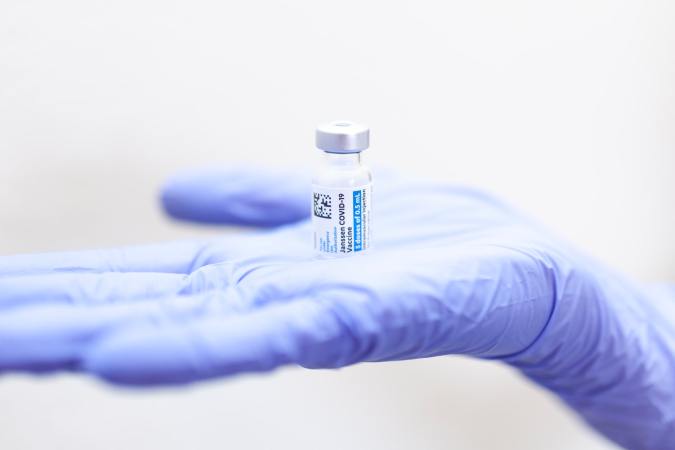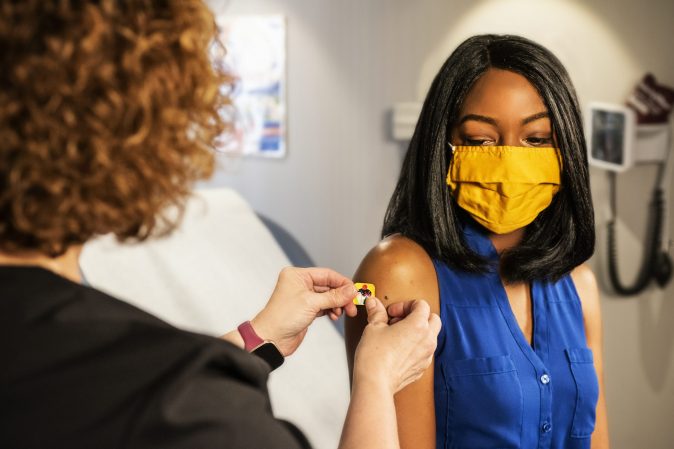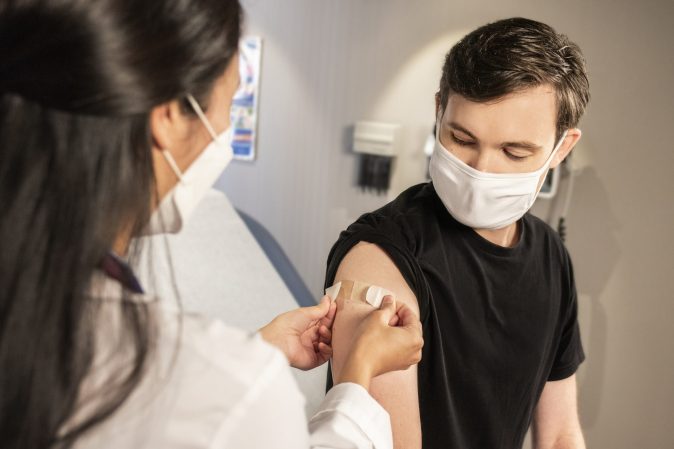

Now that every US state minus Hawaii has set an end date for its indoor mask mandates, federal agencies are rejiggering their own recommendations. This afternoon, the Centers for Disease Control and Prevention (CDC) updated its COVID mask guide so that fewer people need to consider wearing face coverings in public.
Most of the CDC’s changes are based on its community level tool, which measures COVID risks in every US and Puerto Rican county and helps individuals determine the amount of protection they should use depending on where they live, go to work or school, and travel. In light of increasing immunity to the virus and variants like Omicron, the agency overhauled its benchmarks for three community levels: “high” (orange), “medium” (yellow), and “low” (green). Under the new system, 70 percent of Americans are outside of orange zones and can, in theory, stop masking up indoors.
[Related: What to do with your old cloth masks]
The CDC’s guide now only recommends widespread mask use, regardless of vaccination status, in high-risk areas. Previously, this advice also applied to the “substantial” COVID community level, which fell between high and medium. Substantial is no longer marked as a level on the tool.
When the community level tool first launched in early 2021, the categories were defined by case numbers and transmission rates in counties and states. Now the metrics only draw from COVID hospitalizations and occupied inpatient beds in a locality.
“This new framework moves beyond just looking at cases and test positivity to evaluate factors that reflect the severity of disease, including hospitalizations and hospital capacity, and helps to determine whether the level of COVID-19 and severe disease are low, medium, or high in a community,” CDC director Rochelle Walensky said in telebriefing this afternoon. “The COVID-19 community levels we are releasing today will inform CDC measures like masking … This updated approach focuses on directing our prevention efforts toward protecting people at high risk of severe illness and preventing hospital and health care systems from being overwhelmed.”
The changes could also signal a shift in how the US government measures surges and distributes resources like rapid COVID tests and N95 and KN95 masks in the future. But some are saying that it will barely make a blip in most people’s day to day. “The new guidance may not have much of a practical impact for many Americans,” Axios’s Caitlin Owens wrote. “As vaccination and booster rates have risen, case counts have become an increasingly less meaningful measure of the severity of the pandemic. Many experts argue that hospitalizations and the amount of severe cases are much better indicators of how serious an outbreak is.”

There are still large pieces of the country labeled orange on the CDC’s community level map. But most of them, like northern Maine, southwestern Oregon, and eastern Kentucky, cover rural zip codes with sparse health care resources, which might explain why they fall under the updated high-risk benchmarks. West Virginia, however, is starkly orange due to a months-long surge in hospitalizations that the governor says is “looking better.”
But even with relaxed precautions, the CDC website states that people should take personal risk into account when deciding whether to mask up in public. For example, under the medium community level guidance, the agency says: “If you are immunocompromised or at high risk for severe illness, talk to your healthcare provider about additional precautions, such as wearing masks or respirators indoors in public.” However, it doesn’t identify extra masking protocols for adults and older kids who haven’t been vaccinated. To date, nearly 14 percent of the US population hasn’t gotten a single COVID shot. (The vaccines aren’t available for children under 5 yet.)
Despite the shifting guidelines from the CDC and states, masks are always an option for individuals looking to protect themselves and others from the virus. Different types of face coverings offer different amounts of security. And remember, businesses, school districts, transit authorities, and workplaces might have their own indoor masking requirements independent of state mandates that need to be followed.























